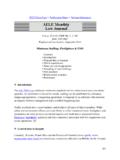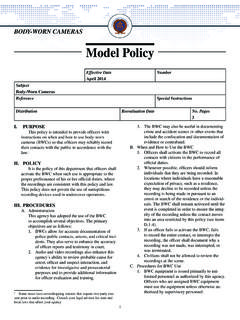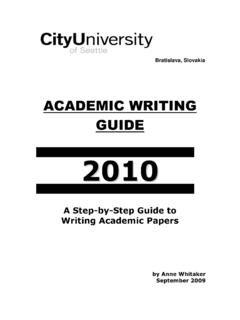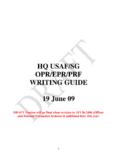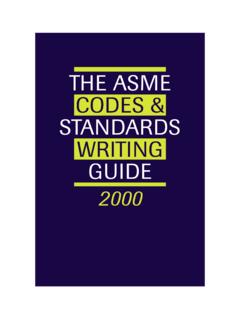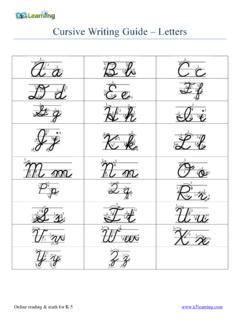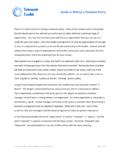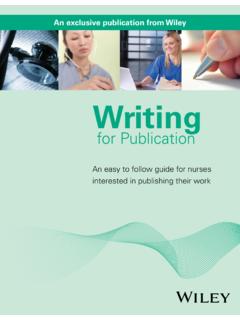Transcription of Use of Force Report Writing Guide - AELE
1 Use of Force Report Writing Guide The Constitutional Standard for Use of Force The Supreme Court case of Graham v. Connor, 490 386 (1989), established Objective Reasonableness as the standard for all applications of Force in United States. This Guide is designed to assist officers in articulating the facts of a Use of Force incident in accordance with the guidance provided in Graham. Remember, all Use of Force applications are judged based upon: The totality of circumstances From the perspective of a reasonable officer On the scene At the moment Force was used. Without 20/20 hindsight In circumstances that are tense, uncertain and rapidly evolving The court specified four specific factors, sometimes referred to as the Graham factors, which assist in determining reasonableness. Although not required, nor all inclusive, articulating these factors provides a good framework for justifying a particular Use of Force .
2 The factors are: The severity of the crime Whether the subject was an immediate threat to the officers or others How the subject was actively resisting arrest (seizure) How the subject was attempting to evade arrest by flight Other Articuable Facts The following list represents facts, which if present, may assist in justifying a particular Use of Force . It is not intended to be all inclusive. The number of suspects vs. the officers involved (availability of back-up) Pre-assault indicators (be the subject s actions and statements) Size, age, and physical condition of the officer and suspect Known or perceived physical abilities of the suspect ( known Mixed Martial Artist) Previous violent or mental history, known to the officer at the time Perception of the use of alcohol or drugs by the subject Perception of the suspect s mental or psychiatric history based on specific actions The availability and proximity to weapons Environmental factors (night, day, snow, ice, heights, heat, terrain, etc.)
3 Injury to the officer or prolonged duration of the incident Officer on the ground or other unfavorable position Characteristics of being armed ( bulges, adjustment of clothing, security touches ) Use of Force Report Writing Guide Facts vs. Conclusions Many police reports contain conclusions disguised as facts . Conclusions are phrases or words that describe a subject s actions, but lack clear articulation of the subject s behaviors. When articulating Force , particular attention should be paid to the specific actions and behaviors of the subject (facts). The following table provides a few examples of when conclusions should be replaced by facts in a written Report . Conclusions Facts Assaultive I m going to kick your ass , specific verbal threats or statements, turned body 90 , boxer s / fighting stance, suddenly closed the distance, shoved the officer, weight shifting, clenched fists, raised hands, profuse sweating, clenched mouth, rapidly closed distance, lunged, grabbed, scanning the area, sudden attack, personal Non-compliant I m not going to jail , ignored commands, acted contrary to commands, walked away, repetitive phrases, illogical Resistant Pulled away, folded arms, 1000 yard stare, became rigid, attempted to hide, unresponsive to physical Matched description Height, weight, clothing, gender, race, hair color, vehicle description, direction of Officer Safety Weapons, physical size, known criminal history, would not keep hands out of pockets, known violent history, type of crime, NCIC / BOLO info.
4 Time of day, characteristics of being armed, proximity to High crime area Number of arrests, types of arrests, personal observations, statistics, citizen s Suspicious activity Unusual appearance for area (heavy coat in summer), unprovoked flight, looking in vehicles, stealthy

